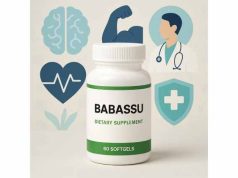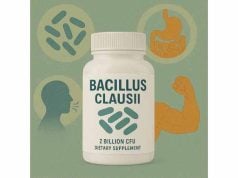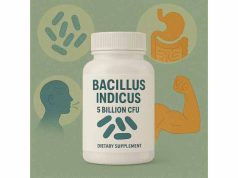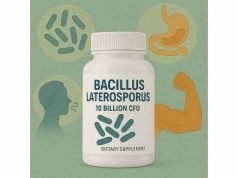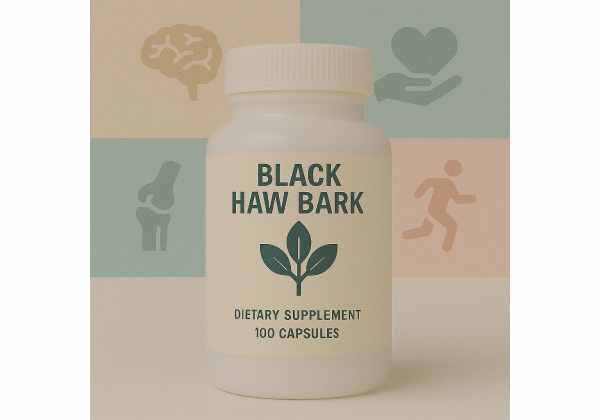
Black haw bark (Viburnum prunifolium) is a treasured herbal remedy with a long tradition in Native American and early Western herbal medicine. This potent bark, harvested from the black haw tree, has earned respect for its ability to ease muscle tension, soothe uterine cramps, and support women’s reproductive health—particularly during menstruation and pregnancy. Black haw bark is also valued for calming spasms, reducing inflammation, and providing gentle nervous system support. Today, it’s most often used as a tincture, tea, or capsule by those seeking natural comfort from painful periods, muscle spasms, or nervous tension. Let’s explore the science, traditions, and best practices for using black haw bark as a supplement for holistic wellness.
Key Takeaways
- Natural cramp reliever: Traditionally used to ease menstrual and uterine cramps, making it a popular herb for women’s wellness.
- Muscle and nerve relaxant: Offers gentle, calming effects for muscle spasms, tension, and mild anxiety.
- Anti-inflammatory benefits: Contains salicin and other compounds that may help soothe inflammation.
- Best for reproductive support: Widely used to promote a more comfortable menstrual cycle and healthy pregnancy (with professional supervision).
- Generally safe: Well-tolerated when used appropriately, but always consult a healthcare provider—especially during pregnancy or if you’re taking medications.
Table of Contents
- Black Haw Bark Origins, Traditional Uses, and Botanical Profile
- Active Compounds and How Black Haw Bark Affects the Body
- Health Benefits and Evidence-Based Uses of Black Haw Bark
- Safety, Tolerability, Potential Side Effects, and Interactions
- Dosage Guidelines, Administration, and Best Practices
- Black Haw Bark Frequently Asked Questions
Black Haw Bark Origins, Traditional Uses, and Botanical Profile
Black haw bark comes from the Viburnum prunifolium shrub or small tree, native to North America. Found along woodland edges and riverbanks, black haw has been prized by Native American and European herbalists for centuries. The bark is collected in spring or fall and then dried for use in teas, tinctures, or powders.
Traditional Uses Across Cultures
- Native American medicine: Black haw bark was used to ease uterine cramps, prevent miscarriage, and support women during childbirth. It was often prepared as a strong tea or decoction.
- Early American and Western herbalism: Adopted for its antispasmodic (spasm-easing) properties, black haw was recommended for menstrual cramps, threatened miscarriage, and muscle spasms.
- Holistic women’s wellness: The bark became a foundation in many traditional formulas for supporting menstruation, pregnancy, and general muscle relaxation.
Botanical Description and Harvesting
- Appearance: Black haw is a shrub or small tree, growing 10–15 feet tall, with dark, serrated leaves, white spring flowers, and blue-black berries in fall.
- Medicinal part: Only the inner bark is used for herbal preparations—recognized by its reddish-brown color and bitter, astringent taste.
- Sustainable harvesting: Ethical wildcrafters gather bark from pruned branches to protect wild populations and ensure future harvests.
Black Haw Bark in Modern Herbalism
Today, black haw bark is mainly used for its:
- Cramp-relieving and muscle-calming effects
- Supportive role during menstruation and pregnancy (with supervision)
- Ability to ease tension and mild nerve-related discomforts
Popular Forms
- Tea/decoction: Simmered in water for a calming, cramp-soothing brew.
- Tincture: Alcohol extract for convenient dosing and long shelf life.
- Capsules: Dried and powdered bark for standardized use.
Summary Table: Black Haw Bark at a Glance
| Feature | Details |
|---|---|
| Scientific name | Viburnum prunifolium |
| Plant part used | Inner bark |
| Traditional uses | Menstrual cramps, miscarriage, spasms |
| Modern forms | Tea, tincture, capsules |
| Main actions | Antispasmodic, anti-inflammatory |
Black haw bark’s heritage as a reliable “women’s herb” and muscle soother continues in contemporary herbal practice, blending wisdom from the past with evidence-based support for today’s needs.
Active Compounds and How Black Haw Bark Affects the Body
The health benefits of black haw bark are rooted in its complex mix of plant chemicals—many of which provide antispasmodic (spasm-easing), anti-inflammatory, and calming effects. Understanding these compounds and how they work in the body helps explain why black haw is so revered among herbalists.
Key Active Ingredients in Black Haw Bark
- Salicin and salicylates: Natural compounds similar to aspirin, these have gentle pain-relieving and anti-inflammatory properties. They help reduce discomfort from cramps and muscle tension.
- Coumarins: Plant molecules that relax smooth muscle tissue and support circulation.
- Tannins: Offer mild astringency, helping to tone tissues and reduce inflammation.
- Viburnine: A unique constituent believed to calm nerves and provide direct spasm-relieving effects.
- Flavonoids and antioxidants: Protect cells from oxidative stress, support immune function, and help reduce inflammation throughout the body.
How Black Haw Bark Works in the Body
- Eases muscle spasms: Black haw acts directly on the smooth muscles of the uterus, intestines, and other organs, helping relieve cramps, spasms, and discomfort.
- Reduces pain and inflammation: Salicin and flavonoids reduce pain signals and inflammation, easing menstrual and muscle pain.
- Calms the nervous system: Viburnine and other compounds gently soothe nervous tension, promoting relaxation and a sense of well-being.
- Supports circulation: Coumarins help maintain healthy blood flow, especially important during menstruation and pregnancy.
Synergistic Herbal Actions
Black haw bark is often combined with other herbs for broader effect:
- With cramp bark (Viburnum opulus): For stronger antispasmodic and pain-relief blends.
- With chamomile or lemon balm: To enhance nervous system relaxation and comfort.
- With raspberry leaf: For additional uterine support during pregnancy and menstruation.
Bioavailability and Absorption
- Water extractions (teas): Excellent for delivering antispasmodic and anti-inflammatory actions.
- Alcohol tinctures: Concentrate a wider range of compounds for efficient, standardized dosing.
Modern Insights and Research
- Laboratory studies confirm black haw bark’s ability to relax smooth muscle, reduce uterine contractions, and decrease markers of inflammation.
- Its combination of salicylates, coumarins, and viburnine make it unique among women’s health and muscle-supporting herbs.
Summary Table: Black Haw Bark’s Key Actions
| Compound | Effect |
|---|---|
| Salicin | Anti-inflammatory, pain relief |
| Viburnine | Nerve calming, antispasmodic |
| Coumarins | Muscle relaxation, circulation |
| Flavonoids | Antioxidant, tissue support |
Black haw bark’s effectiveness is a result of its balanced, multifaceted chemistry, offering holistic support for muscle comfort and women’s reproductive health.
Health Benefits and Evidence-Based Uses of Black Haw Bark
Black haw bark has maintained its status as one of herbalism’s premier natural remedies for muscle spasms and women’s reproductive wellness. Let’s examine the science, tradition, and real-world uses that support its ongoing popularity.
1. Menstrual Cramp Relief and Menstrual Support
- Reduces uterine spasms: Black haw is a classic herbal remedy for painful periods (dysmenorrhea), relaxing the uterine muscles and making menstrual cycles more comfortable.
- Eases pelvic discomfort: Helpful for bloating, lower back pain, and other muscle-related symptoms of menstruation.
2. Pregnancy and Childbirth Support
- Prevents miscarriage (traditional use): Historically given to women with a history of miscarriage, black haw bark supports a calm, stable uterus—though always under professional supervision.
- Eases labor pains: Used during late pregnancy or early labor to reduce the intensity of contractions and promote smoother delivery.
- Pre-labor tonic: Some midwives include black haw in formulas to prepare for childbirth and minimize postpartum discomfort.
3. Muscle Spasms and Cramps Beyond Women’s Health
- General antispasmodic: Black haw helps relieve muscle cramps, spasms, and tension anywhere in the body—including legs, back, or digestive tract.
- Sports and physical activity: Sometimes used by athletes or those with physically demanding jobs to manage muscle tightness or soreness.
4. Mild Pain Relief and Inflammation Reduction
- Natural alternative to aspirin: Thanks to its salicin content, black haw can help relieve mild pain and inflammation—especially for those sensitive to synthetic pain relievers.
- Soothes joint discomfort: Occasionally used as part of blends for arthritis, fibromyalgia, or chronic pain.
5. Calming the Nervous System
- Eases nervous tension and anxiety: Black haw’s mild sedative effect makes it useful for people dealing with stress, irritability, or trouble relaxing due to pain.
6. Uterine and Reproductive Health Tonic
- Pre-menstrual and peri-menopausal support: Supports hormonal and physical comfort for women at all life stages.
- Postpartum recovery: Helps soothe afterbirth pains and support uterine healing.
Who Benefits Most?
- Women with painful or irregular periods
- Those with history of muscle cramps, spasms, or nervous tension
- Pregnant women (only with healthcare supervision)
- Anyone seeking a gentle, plant-based approach to pain and muscle support
Popular Ways to Use Black Haw Bark
- Teas or decoctions: For menstrual or muscle cramps—often taken several days before symptoms typically start.
- Tinctures or extracts: For quick relief and precise dosing.
- Capsules or powders: For long-term support or travel-friendly use.
Black haw bark is cherished for its reliability and gentle nature, bringing comfort and ease to those facing menstrual pain, spasms, or tension—without harsh side effects or sedation.
Safety, Tolerability, Potential Side Effects, and Interactions
Black haw bark is celebrated in herbal traditions for its gentle, reliable action and minimal side effects, but—as with any supplement—it’s important to use it mindfully and recognize potential risks. While generally safe for most adults, there are situations when black haw bark should be used with extra caution or avoided altogether. Let’s break down what you need to know to stay safe while enjoying the benefits of this trusted herb.
General Safety Profile
- Traditional use: Black haw bark has a long record of use in Native American and Western herbal medicine, particularly for women’s health. Its reputation as a “safe” herb is supported by generations of use.
- Modern evidence: Clinical and laboratory studies suggest black haw bark rarely causes serious side effects when used as recommended. Most users tolerate it very well.
Possible Side Effects
Although rare, some users may experience mild, transient symptoms, including:
- Digestive upset: Occasional reports of nausea, vomiting, or diarrhea, especially if large amounts are consumed.
- Drowsiness: Due to its calming properties, black haw may cause mild sedation or sleepiness in some people.
- Allergic reaction: As with any plant, allergic reactions (itching, rash, swelling) are possible but uncommon.
- Bitter taste: The bark’s astringent, bitter flavor may cause aversion or mild stomach upset in sensitive individuals.
Who Should Use Caution or Avoid Black Haw Bark?
- Pregnant women (without supervision): Black haw bark is traditionally used to help prevent miscarriage and manage cramps, but it should only be used in pregnancy under the guidance of a skilled herbalist or healthcare provider. Improper use may affect uterine tone or interact with other medications.
- People with salicylate sensitivity: Since black haw contains salicin (similar to aspirin), those allergic to aspirin or other salicylates should avoid it.
- Individuals with kidney stones: The oxalate content in black haw bark may exacerbate kidney stone risk in susceptible individuals.
- Children: While historically used for childhood spasms or colic, modern safety data is limited—consult a pediatrician before use.
- People on certain medications: See below for possible interactions.
Potential Interactions with Medications
- Anticoagulants and antiplatelet drugs: Salicin in black haw bark may have a mild blood-thinning effect, possibly increasing the risk of bleeding when combined with drugs like warfarin, aspirin, or clopidogrel.
- Aspirin and NSAIDs: Additive effects are possible—monitor for increased bleeding or stomach upset.
- Sedatives or CNS depressants: Black haw’s calming effects may amplify those of prescription sedatives, anti-anxiety medications, or sleep aids.
- Blood pressure or heart medications: Use caution and consult your doctor, as black haw may have mild cardiovascular effects.
Best Practices for Safe Use
- Start low, go slow: Begin with the lowest recommended dose, especially if you’re new to the herb or have a history of sensitivities.
- Monitor your body: Discontinue use and seek medical advice if you notice rashes, persistent digestive upset, dizziness, or any severe symptoms.
- Inform your healthcare provider: Always let your practitioner know about any herbs or supplements you’re using, particularly before surgery, dental work, or starting new medications.
- Avoid long-term, high-dose use: Use for acute relief or as recommended by your herbalist; long-term safety at high doses has not been established.
Environmental and Product Quality Notes
- Choose organic, sustainably sourced black haw bark to avoid pesticide residues and support ethical wildcrafting.
- Use only reputable brands—ideally those that provide third-party testing for purity and quality.
When to Seek Medical Attention
- Signs of allergic reaction (hives, swelling, breathing difficulty)
- Unexplained bruising or bleeding
- Persistent gastrointestinal distress
Conclusion
For most healthy adults, black haw bark is a gentle and effective support for cramps, muscle tension, and nervous discomfort. As always, responsible use and communication with your healthcare provider ensure your experience is safe, effective, and tailored to your needs.
Dosage Guidelines, Administration, and Best Practices
Black haw bark’s traditional role as a cramp and muscle spasm reliever depends on correct use and appropriate dosing. Whether you’re new to this botanical or seeking to optimize your current regimen, following these guidelines will help you achieve the best results with minimal risk.
Typical Dosages for Adults
- Tea or decoction: Simmer 1–2 teaspoons (about 2–4 grams) of dried black haw bark in 1 cup of water for 15–20 minutes. Strain and drink up to 3 times daily during periods of discomfort.
- Tincture: Standard dosing is 2–4 mL (about 40–80 drops) of a 1:5 tincture (herb to alcohol) up to three times daily. Adjust based on age, weight, and response.
- Capsules: Follow product label, but typical doses are 400–600 mg dried bark per capsule, taken 1–3 times daily as needed.
Best Practices for Preparation and Use
- Start with the lowest dose: Especially for those sensitive to herbs or new to black haw bark.
- For menstrual support: Begin 2–3 days before your expected period and continue through the first few days of symptoms.
- For muscle or nerve discomfort: Use as needed during episodes of cramps, spasms, or tension.
- With food or after meals: This may help reduce any mild digestive upset.
Who Should Avoid Self-Medicating?
- Pregnant women, unless under professional supervision.
- Individuals with a history of aspirin allergy or kidney stones.
- Children, unless directed by a pediatrician or herbalist.
Combining with Other Herbs
- Black haw bark works synergistically with cramp bark, chamomile, or lemon balm for menstrual and nerve-related discomfort.
- For pain or inflammation, can be paired with ginger or turmeric for additional relief.
Storage and Shelf Life
- Store dried bark in an airtight container, away from heat and sunlight—will keep for up to one year.
- Tinctures last longer if stored in a cool, dark place (up to five years).
Signs You May Need to Adjust Your Dose
- Persistent drowsiness or digestive symptoms: Lower your dose or frequency.
- Insufficient relief: Gradually increase within recommended ranges, or consider combining with complementary herbs.
Sample Use Plans
- Menstrual cramps: 1 cup black haw bark tea every 6–8 hours as needed during period.
- Muscle spasms: 2 mL tincture at onset, repeat as required, up to three doses per day.
- Nerve tension: Low-dose tea or tincture once or twice daily for up to one week.
Working With a Professional
Because individual responses vary, consider consulting a clinical herbalist, naturopathic doctor, or integrative healthcare provider for tailored dosing and long-term strategies.
Black Haw Bark Frequently Asked Questions
What is black haw bark most commonly used for?
Black haw bark is mainly used to relieve menstrual cramps, ease muscle spasms, and support women’s reproductive health, especially during menstruation and pregnancy under supervision.
Is black haw bark safe for pregnancy?
Traditionally, black haw bark is used during pregnancy to prevent miscarriage or preterm labor, but only under professional guidance. Self-medication is not recommended during pregnancy.
Does black haw bark have any side effects?
Most people tolerate black haw bark well. Rare side effects include mild nausea, drowsiness, or allergic reactions. Those allergic to aspirin or with kidney stones should avoid use.
Can black haw bark interact with medications?
Yes, black haw bark contains salicin (aspirin-like) compounds and may interact with blood thinners, aspirin, NSAIDs, or sedative medications. Consult your healthcare provider if you use any of these.
How should black haw bark be taken for menstrual cramps?
For cramps, use 1 cup of tea or 2–4 mL tincture every 6–8 hours as needed, starting before your period and continuing through the most uncomfortable days.
Is black haw bark safe for long-term use?
Short-term use for acute symptoms is generally safe for most adults. Long-term, high-dose use is not recommended due to limited safety data—consult a healthcare professional for extended use.
Can men use black haw bark?
Yes, men can use black haw bark for muscle cramps, spasms, or mild pain. While it’s especially popular for women’s health, its muscle-relaxing properties benefit anyone.
Disclaimer:
This article is for educational purposes only and is not intended as a substitute for medical advice, diagnosis, or treatment. Always consult a qualified healthcare professional before starting any new supplement, especially if you have health conditions, are pregnant, or take medications.
If you found this guide useful, please share it on Facebook, X (formerly Twitter), or your favorite social platform. Follow us for more natural wellness insights—your support helps us continue bringing you the latest in evidence-based herbal health!


